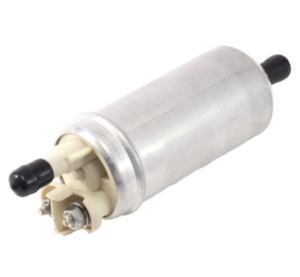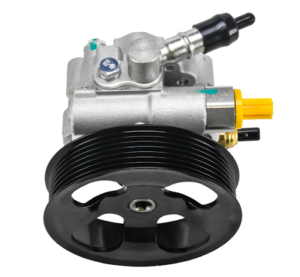Understanding Automotive Starters: Your Engine’s First Step
When you turn the key in your ignition or push the start button, you expect your vehicle to roar to life. At the heart of this process is the starter motor, a crucial component that initiates your engine’s operation. In this blog post, we’ll explore what an automotive starter is, how it works, common issues, and maintenance tips to keep it in top shape.
What is an Automotive Starter?
An automotive starter is an electric motor that engages the engine’s flywheel to crank the engine and start the combustion process. Without a functioning starter, your vehicle simply won’t start, no matter how much fuel is in the tank or how charged the battery is.

How Does a Starter Work?
The operation of a starter is relatively straightforward, involving several key components:
- Ignition Trigger: When you turn the ignition key or press the start button, an electrical signal is sent from the battery to the starter.
- Solenoid Engagement: The starter solenoid, which is a small relay mounted on the starter, receives the electrical signal. It engages a gear mechanism that connects the starter motor to the engine’s flywheel.
- Motor Activation: The starter motor then spins, cranking the engine. This rotation allows the engine to draw in air and fuel, initiating the combustion process.
- Disengagement: Once the engine starts running, the solenoid disengages the starter motor from the flywheel to prevent damage.
Common Issues with Starters
Like any automotive component, starters can experience problems over time. Here are some common issues to look out for:
- Clicking Noise: If you hear a clicking sound when turning the key, it could indicate a weak battery or a faulty starter solenoid.
- No Response: If the starter doesn’t engage at all, it could be due to a dead battery, bad connections, or a failed starter motor.
- Intermittent Starting: If your vehicle starts sporadically, it may suggest an issue with the starter’s electrical connections or the solenoid.
- Burning Smell: A burning smell, often accompanied by smoke, can indicate that the starter is overheating or malfunctioning.
Signs of a Failing Starter
Being aware of the signs of a failing starter can help you catch issues before they escalate:
- Engine Cranking Slowly: If the engine cranks slowly or labors when starting, it may indicate a weakening starter.
- Dashboard Warning Light: Some vehicles have a warning light that may illuminate if there’s an issue with the starting system.
- Frequent Jump Starts: If you find yourself needing to jump-start your vehicle often, it might be a sign that the starter is struggling to operate correctly.
Maintenance Tips for Your Starter
Proper maintenance can help extend the life of your starter and ensure it operates smoothly. Here are some tips:
- Regular Battery Checks: Ensure your battery is in good condition and fully charged. A weak battery can strain the starter.
- Inspect Electrical Connections: Regularly check the starter’s wiring and connections for corrosion or damage that could impact performance.
- Listen for Unusual Noises: Pay attention to any unusual sounds when starting your vehicle. If you hear grinding or clicking, have it checked out.
- Professional Inspections: During routine maintenance, ask your mechanic to inspect the starter and associated components. Early detection of issues can save you from unexpected breakdowns.
Conclusion
The starter is an essential component of your vehicle’s starting system, enabling the engine to crank and begin the combustion process. Understanding how it works and recognizing potential issues can help you maintain your vehicle’s performance and reliability. Regular inspections, proper maintenance, and timely repairs will ensure your starter operates effectively for years to come. If you suspect any problems with your starter, don’t hesitate to consult a professional mechanic to keep your vehicle ready for the road!





